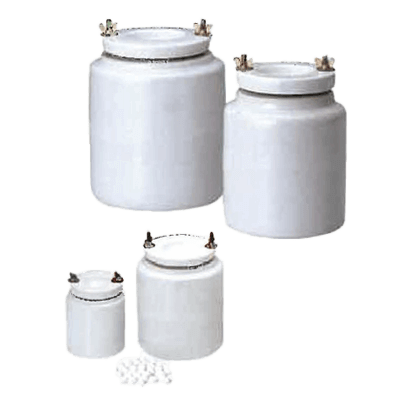What Is a Pottery Mill?

A pottery mill is a device used to grind and mix samples. It consists of a cylindrical ceramic pot, which rotates, and balls that grind the sample inside to obtain a finer, more uniform powder. The pot and balls are made of hard materials like alumina, zirconia, or nylon, ensuring a low risk of wear or chipping during grinding. This setup provides high chemical resistance, reducing the risk of equipment corrosion by components in the milled sample and preventing sample contamination.
Uses of Pottery Mills
Pottery mills are commonly used for grinding and uniformly mixing samples. Due to their design, they are particularly effective in applications that require fine and consistent sample preparation, such as in ceramic glaze mixing or in secure data destruction processes like crushing USB and floppy disks.
Features of Pottery Mills
A pottery mill includes a pot, a bowl, and a body. The pot is cylindrical and made of ceramic, which holds the sample and grinding balls. The grinding balls are made from materials like alumina, zirconia, or nylon. The body of the mill consists of two rotating shafts that facilitate the rotation of the pot.
Using a pottery mill involves placing the sample and balls in the pot, sealing it, and then rotating it on the shafts. The internal agitation from the rotating balls crushes the sample. After grinding, the sample can be collected using a sieve.
The grinding balls are durable and can be reused after cleaning. However, it’s important to inspect them regularly for any signs of wear or damage.
Difference Between a Pottery Mill and a Ball Mill
While similar in function, a pottery mill is often a smaller version of a ball mill, which is a more general term for equipment that grinds using metal or ceramic balls. Large industrial ball mills are used for extensive milling and mixing operations, serving a variety of industrial applications, from raw material production for asphalt and ceramics to pharmaceutical formulation and semiconductor manufacturing.
Ball Particle Size in Pottery Mills
The size of the balls in pottery mills affects the fineness of the grinding result. Larger balls tend to produce a coarser grind, while smaller balls result in a finer grind. The choice of ball size depends on the desired fineness of the ground sample and the specific application requirements.